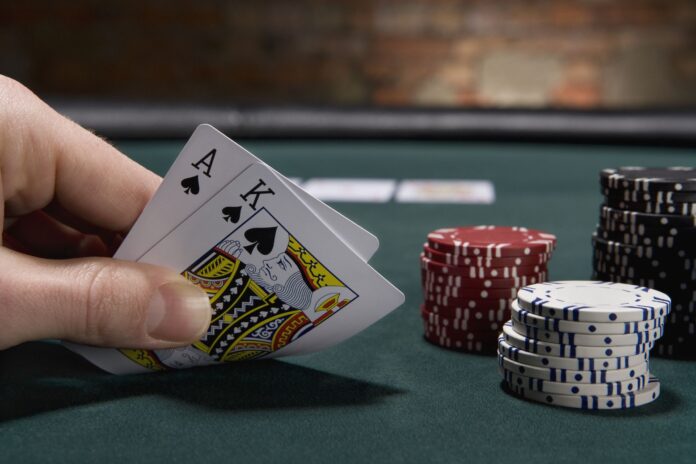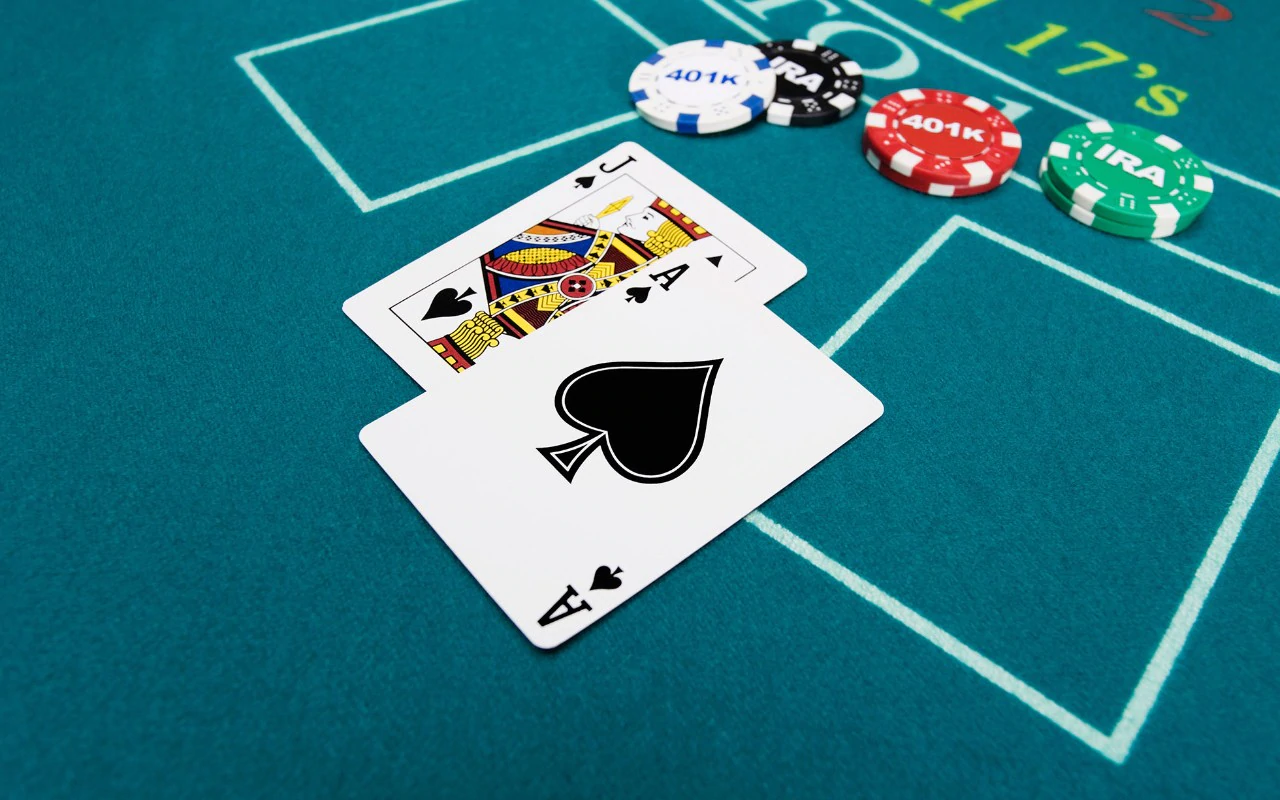Introduction
How Does Splitting Work In Blackjack: In the game of blackjack, splitting is a strategic move that allows players to divide a pair of cards into two separate hands. This option becomes available when the player is dealt a pair as their initial two cards. By splitting, players can effectively play two hands simultaneously, each starting with one of the split cards.
The concept of splitting adds an additional layer of decision-making to the game and can be an advantageous move if used wisely. It gives players the opportunity to potentially improve their chances of winning by creating stronger hands or capitalizing on favorable card combinations.
However, the rules and strategies surrounding splitting can vary depending on the specific casino and blackjack variation being played. Understanding the rules and knowing when to split is essential for making informed decisions at the blackjack table.
We will explore the mechanics of splitting in blackjack, including the rules, scenarios in which splitting is beneficial, and some important strategies to consider. By mastering the art of splitting, players can enhance their blackjack gameplay and increase their chances of success.

What are the rules for splitting in blackjack?
If you hold two cards that are the same number in your hand, like two eights or two sixes, you can split them apart and play each one like two separate hands instead of one. Once you split your two cards into two hands, you’ll place your original bet with one hand and place an equal bet on the second, split hand.
In blackjack, splitting is an option available to players when they are dealt a pair of cards of the same rank. When you choose to split, you separate the pair into two individual hands and place an additional bet equal to your original wager on the second hand.
The basic rules for splitting in blackjack are as follows:
1. Pair requirement: You can only split pairs, meaning two cards of the same rank (e.g., two 7s, two Queens, etc.). You cannot split non-pair hands like a 10 and a King.
2. Splitting option: When you are dealt a pair, you have the option to split. Not all casinos or variations of blackjack allow splitting, so it’s important to check the specific rules beforehand.
3. Splitting procedure: To split, you place an additional bet equal to your original wager on the second hand. The pair is separated, and each card becomes the first card of a new hand.
4. Playing each hand: After splitting, you play each hand separately. You can hit, stand, double down, or surrender on each hand as you would normally.
5. Splitting Aces: A special rule often applies to splitting Aces. In many cases, when you split Aces and then receive a 10-value card on either Ace, it is considered a regular 21 hand and not blackjack.
It’s important to note that the specific rules and limitations for splitting can vary depending on the casino and blackjack variation being played. Always familiarize yourself with the rules of the specific game you are playing before making any splitting decisions.
When should you split cards in blackjack?
In blackjack, the standard rule is that if the player is dealt a pair of identically ranked initial cards, known as a pair, the player is allowed to split them into separate hands and ask for a new second card for each while placing a full initial bet identical to the original wager with each.
In blackjack, the decision to split cards depends on the specific cards you have been dealt and the rules of the game. However, there are general guidelines that can help you determine when it’s advantageous to split. Here are some common situations when you should consider splitting:
1. Pairs of Aces or Eights: Splitting Aces gives you a chance to create two strong hands, each starting with an Ace. Splitting Eights is also advisable because a hand with two Eights has a total value of 16, which is considered one of the worst hands in blackjack.
2. Pairs of Tens: It is generally not advisable to split tens since they already form a strong hand with a total value of 20. Splitting them would risk weakening both hands.
3. Pairs of Sixes and Sevens: Splitting these pairs can be beneficial when the dealer’s upcard is weak (2 through 6). It gives you an opportunity to improve your hands and potentially win both.
4. Pairs of Fours, Fives, and Nines: Splitting these pairs depends on the specific game rules and the dealer’s upcard. Some blackjack variations allow splitting fours and fives, while others do not.
5. Pairs of Twos and Threes: Splitting these pairs can be considered when the dealer’s upcard is weak (2 through 7).
It’s important to note that the decision to split ultimately depends on the specific game rules, the dealer’s upcard, and your own strategy preferences. It’s always a good idea to familiarize yourself with the rules and basic strategy for the particular game you are playing to make informed splitting decisions.
What is the advantage of splitting in blackjack?
You are now playing two hands and must match your initial wager for the new, second hand. The key advantage of splitting is that you now have twice as much money on the table, perfect if the dealer looks weak. Presuming the dealer goes on to bust, you now win twice as much money than you would otherwise have done.
Splitting in blackjack can provide several advantages if done strategically:
1. Creating Stronger Hands: Splitting pairs allows you to form two separate hands, each starting with a strong card. For example, splitting a pair of Aces gives you the opportunity to make two hands starting with an Ace, which can be valuable in achieving a natural blackjack (an Ace and a 10-value card).
2. Increasing Winnings: When you split and create two separate hands, you have the potential to win multiple times in a single round. If both hands win against the dealer’s hand, you receive a payout for each winning hand, effectively increasing your overall winnings.
3. Reducing Losses: Splitting can help minimize potential losses. For instance, when you split a pair of Eights, which is generally considered a weak hand, you have the chance to improve your position by potentially receiving low-value cards for each split hand and increasing the probability of avoiding a bust.
4. Capitalizing on Dealer Weakness: Splitting pairs can be advantageous when the dealer’s upcard is weak (usually 2 through 6). By splitting certain pairs, such as sixes and sevens, you can potentially create two strong hands and increase your chances of winning against a dealer with a weak hand.
However, it’s important to note that splitting is not always advantageous. It depends on the specific cards, the dealer’s upcard, and the rules of the game. It’s essential to consider these factors and follow basic strategy guidelines when deciding whether to split or not.
Should you split 2 aces in blackjack?
Always split
Cards with a value of ten are plentiful in blackjack, so it makes sense to split a pair of aces. If you don’t split your aces, one is given a value of one and the other a value of 11. This means only a nine can take you to 21 on your next card.
Splitting Aces gives you the opportunity to create two separate hands, each starting with an Ace. Here are a few reasons why splitting Aces is beneficial:
1. Potential for Blackjack: When you split Aces, you have the chance to draw a 10-value card (10, Jack, Queen, or King) for each Ace, resulting in two hands with a total value of 21, known as a blackjack. A blackjack is the strongest hand in blackjack and typically pays out at a higher rate.
2. Increased Winning Potential: By splitting Aces, you create two separate hands, doubling your chances of winning against the dealer. Each hand is played independently, so if one hand wins and the other loses, it results in a push (tie) rather than an outright loss.
3. Maximizing Value: A pair of Aces has a total value of 12, which is not a strong starting hand. Splitting Aces gives you a better chance of improving the value of your hands. With each Ace being the starting card for a new hand, you have the potential to receive more favorable cards and increase the overall value of your hands.
However, it’s important to be aware that some blackjack variations may have specific rules regarding splitting Aces. For example, some casinos may allow only one additional card to be drawn per split Ace. Make sure to familiarize yourself with the specific rules of the game you are playing to make informed decisions.

Is it smart to split 2S in blackjack?
RESPLITTING 2S
If the playing rules allow you to resplit, then it is advantageous for you to do so. For example, if you are dealt a pair of 2s against a dealer’s 5 upcard, you should split them. Suppose on the first 2, you are dealt another 2 on the draw. You should resplit to form a third hand.
The reason is that splitting 2s will separate a weak starting hand into two potentially weaker hands. Here are a few factors to consider:
1. Total Value: When you split 2s, you create two separate hands that start with a value of 2 each. This is a very low starting point and puts you at a disadvantage against the dealer’s potential hand.
2. Potential Improvement: Splitting 2s does not offer a significant opportunity for improving the value of your hands. Even if you draw a 10-value card to one of the split 2s, you would end up with a total of 12, which is still a weak hand.
3. Dealer’s Up Card: It’s important to consider the dealer’s up card when deciding whether to split 2s. If the dealer has a strong up card, such as a 7 or higher, it increases the likelihood of the dealer having a strong hand. Splitting 2s in such situations would put you at a higher risk of ending up with two losing hands.
In most cases, it is better to follow basic strategy and simply hit (draw another card) when you have a pair of 2s. This gives you a chance to improve the total value of your hand without the added risk of splitting into weaker hands.
When can you split your cards in blackjack?
In blackjack, you can split your cards when you are dealt a pair of the same rank, such as two 7s or two Queens. This gives you the option to separate the pair into two separate hands and play them individually. However, it’s important to note that not all blackjack variations allow splitting, so you should familiarize yourself with the specific rules of the game you are playing.
To initiate a split, you must place an additional bet equal to your original wager. The dealer will then separate your pair and deal a second card to each hand, creating two separate hands to play. From there, you can play each hand as you would normally, making decisions such as hitting, standing, doubling down, or splitting again if applicable.
Splitting can be advantageous if done strategically, as it allows you to potentially create two strong hands and increase your chances of winning. However, it also involves additional risk and requires careful consideration of the dealer’s upcard and the rules of the game.
What happens when you split a pair in blackjack?
When you split a pair in blackjack, the following actions occur:
1. Additional bet: To split your pair, you must place an additional bet equal to your original wager. This means you will have two bets on the table, one for each hand.
2. Separation: The dealer will separate your pair into two individual hands, placing an additional card next to each of the split cards. This creates two separate hands that you will play independently.
3. Playing each hand: Once the split has been made, you will proceed to play each hand one at a time. Starting with the first hand, you can choose to hit (request an additional card), stand (end your turn), double down (double your bet and receive one more card), or split again if you are dealt another pair.
4. Resolving each hand: After you have completed playing the first hand, you move on to the second hand and follow the same sequence of actions. Once both hands have been played, the dealer will proceed with their turn and compare their hand to yours to determine the outcome.
By splitting a pair, you have the opportunity to create two separate hands, increasing your chances of winning if played strategically. However, it also requires an additional wager and involves a higher level of risk.
Are there any limitations or restrictions on splitting in blackjack?
Yes, there are certain limitations and restrictions on splitting in blackjack, and they can vary depending on the specific casino’s rules. Some common limitations include:
1. Same-value cards: You can only split pairs that have the same value, such as two 7s or two 10s. You cannot split cards of different ranks, like a 10 and a queen.
2. Number of splits: In most casinos, you are allowed to split your cards only once. So, if you receive another pair after the initial split, you usually cannot split them again.
3. Doubling down after split: Some casinos allow you to double down on your original bet after splitting a pair, while others may not permit it.
4. Aces: When you split aces, some casinos may only allow you to receive one additional card for each ace. If you get a 10-value card after splitting aces, it’s considered a regular 21, not a blackjack.
5. Restrictions on splitting certain pairs: Some casinos may have additional rules on specific pairs, like not allowing you to split 4s, 5s, or 10-value cards.
6. Surrender after split: In some games, the option to surrender may be unavailable after you split your cards.
It’s essential to be familiar with the specific rules of the blackjack variant you are playing to understand the limitations and restrictions on splitting. Different rules can affect the optimal strategy and your overall chances of success.

Conclusion
Splitting in blackjack is a powerful tool that can greatly impact the outcome of the game. It allows players to take advantage of favorable situations and potentially double their winnings. By understanding the rules and employing effective strategies, players can make informed decisions when faced with a pair of cards.
The key to successful splitting lies in evaluating the dealer’s upcard and considering the probabilities of improving each hand. Splitting certain pairs, such as aces and eights. On the other hand, some pairs, like tens or fives, are generally better played as a single hand.
It is important to note that splitting does come with some risks. It can increase the amount of money at stake and potentially lead to a loss if not executed properly. Therefore, players should always consider their bankroll and the specific table limits before deciding to split.
Overall, mastering the art of splitting blackjack requires practice, strategy, and a good understanding of the game. By making wise splitting decisions, players can maximize their winning potential and enhance their overall blackjack experience.










